In the rapidly evolving drone market, staying ahead with the latest accessories is crucial. With the drone camera market projected to reach USD 32.85 billion by 2028, understanding how to choose the right accessories becomes imperative for business buyers. This article provides an in-depth analysis, offering valuable insights and guidance for selecting the best drone accessories to meet professional needs and market demands.
Table of Contents:
– Market Overview: Drone Accessory Industry
– In-depth Analysis of the Drone Accessory Market
– Key Factors When Selecting Drone Accessories
– Understanding the Latest Drone Accessory Trends
– Cost Considerations and Budgeting for Drone Accessories
– Enhancing Drone Operations with Advanced Accessories
– Wrapping Up
Market Overview: Drone Accessory Industry
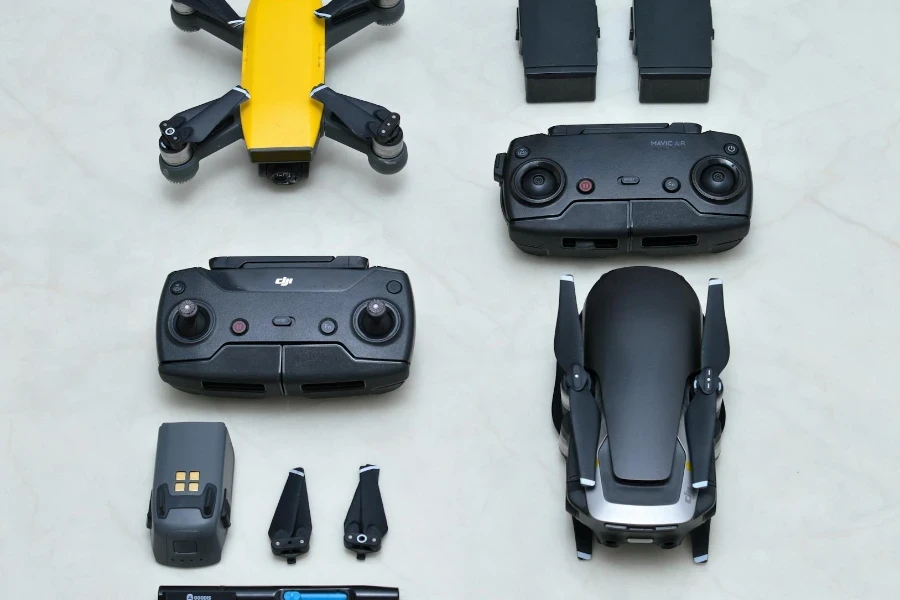
The global drone accessory market has seen substantial growth, driven by the expansion of the drone camera market. The drone camera market is expected to grow at a CAGR of 26.6% through 2028, reaching approximately USD 32.85 billion by 2028. This growth is fueled by the increased use of drones in sectors like defense, agriculture, real estate, and entertainment. Consequently, the drone accessory market, which includes batteries, propellers, and gimbals, is projected to follow a similar trajectory due to rising demand for drones and their components.
The drone accessory market is divided into categories such as batteries, propellers, gimbals, and payloads. Each segment has unique growth drivers, with batteries and gimbals being the most significant. For instance, the market for drone batteries is expected to grow at a CAGR of 30.5% from 2023 to 2024, driven by the need for longer flight times and better energy storage. Similarly, the market for gimbals is anticipated to grow significantly due to advancements in drone technology and increased demand for high-quality aerial footage.
North America holds the largest share of the drone accessory market, followed by Asia-Pacific. Growth in North America is driven by high adoption rates of drones in both commercial and recreational applications, along with significant investments in drone technology. In Asia-Pacific, countries like China, Japan, and India are experiencing rapid growth in drone usage, supported by technological advancements, increased government support, and rising demand for drones in agriculture and infrastructure monitoring.
In-depth Analysis of the Drone Accessory Market
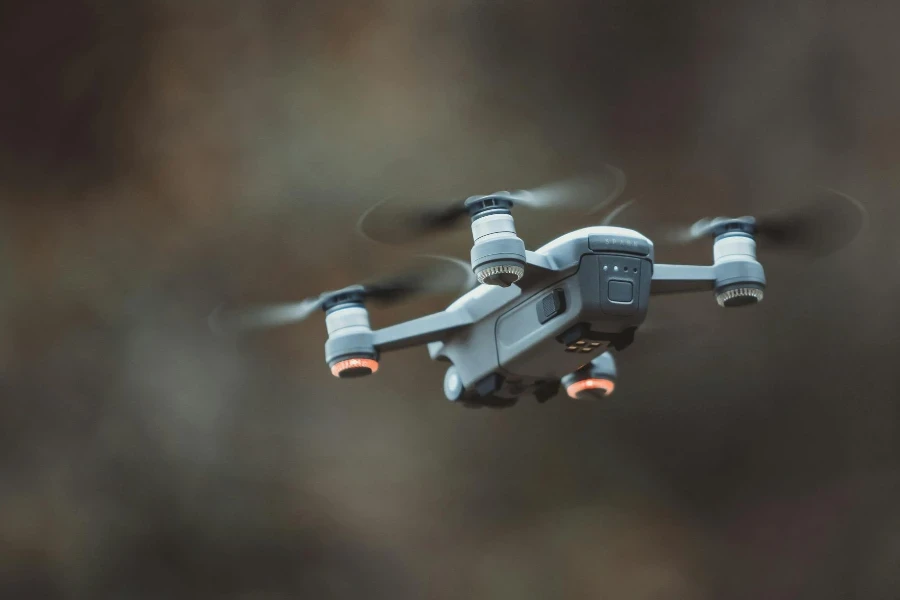
The drone accessory market is shaped by key performance benchmarks, market share dynamics, and economic influences. Technological advancements in drone components, such as lighter and more efficient batteries, have significantly enhanced drone performance and capabilities. For example, the miniaturization of components has improved payload capacity, flight range, and altitude, making drones more versatile and efficient.
Market share dynamics show that the drone accessory market is moderately consolidated, with major players like DJI, Parrot, and Yuneec holding significant shares. However, smaller innovative companies are also making their mark with cutting-edge products. The competitive landscape is influenced by continuous product innovation, strategic partnerships, and mergers and acquisitions. For instance, DJI’s introduction of the Matrice 350 RTK, with advanced features, has set a new industry benchmark.
Economic factors, such as increased defense budgets and government investments in drone technology, significantly impact the market. The defense sector, in particular, drives growth, utilizing drones for surveillance, reconnaissance, and combat operations. The expansion of applications for GPS, inspection and mapping services, and LiDAR further fuels demand for drone accessories.
Consumer behavior is shifting, with more hobbyists and professionals adopting drones for various applications. Sales typically spike during holiday seasons and major events, where drones are popular gifts and tools for capturing aerial footage. The preference for online sales is growing due to the convenience and wider product range available.
Recent innovations in the drone accessory market include autonomous drones, AI and machine learning integration, and the use of renewable energy sources for more sustainable operations. These advancements are expected to drive further market growth and provide new opportunities.
Customer pain points in the drone accessory market include regulatory challenges, privacy concerns, and the need for advanced technological infrastructure. Companies are addressing these issues by collaborating with regulatory bodies, investing in R&D, and developing user-friendly interfaces and applications.
Brand positioning and differentiation are crucial for companies to stand out in the competitive market. Leading brands focus on innovation, quality, and customer support to build a loyal customer base. Niche markets, such as drone racing and specialized industrial applications, offer additional growth opportunities for companies that can cater to specific needs.
The drone accessory market is poised for significant growth, driven by technological advancements, increasing demand, and expanding applications across various sectors. Companies that innovate and adapt to changing market dynamics will be well-positioned to capitalize on future opportunities.
Key Factors When Selecting Drone Accessories
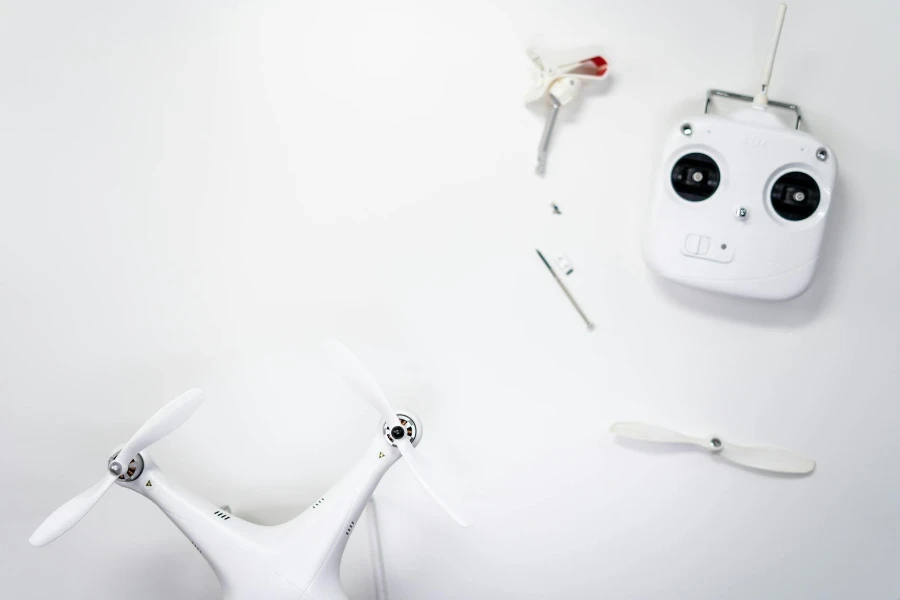
When selecting drone accessories, consider various factors to ensure optimal performance, durability, and compatibility. The following sections will guide business buyers in making informed decisions.
Compatibility with Drone Models
Compatibility is crucial when choosing drone accessories. Each drone model has specific requirements, and using incompatible accessories can lead to poor performance or damage.
For example, DJI drones need accessories designed for their models. The DJI Phantom series has different battery specifications compared to the DJI Mavic series. Using the wrong battery type can reduce flight time or pose safety hazards.
Additionally, propeller guards must match the drone’s size and design. Incompatible guards can interfere with flight dynamics, causing instability or crashes. Always check the manufacturer’s recommendations and ensure that the accessories are designed for your specific drone model.
Build Quality and Materials
The build quality and materials of drone accessories significantly impact their durability and performance. High-quality materials, such as carbon fiber for propellers or high-grade plastics for frames, ensure longevity and reliability.
Carbon fiber propellers offer superior strength and reduced weight compared to plastic propellers. This material enhances flight efficiency and withstands environmental stress better.
Similarly, drone cases made from durable materials like ABS plastic or aluminum provide robust protection during transport. These materials absorb shocks and prevent damage from impacts, ensuring the drone and its accessories remain safe and functional.
Battery Life and Performance
Battery life is critical for any drone operation. High-capacity batteries extend flight times, allowing for longer missions and reducing downtime for recharging.
Lithium-polymer (LiPo) batteries are commonly used in drones due to their high energy density and lightweight properties. When selecting batteries, consider the capacity (measured in milliampere-hours, mAh) and the discharge rate (C-rating). Higher capacity batteries provide longer flight durations, while a suitable discharge rate ensures consistent power delivery.
Intelligent batteries with built-in management systems can monitor temperature, voltage, and charge cycles, enhancing safety and prolonging battery life. Investing in high-quality, reliable batteries is crucial for maintaining operational efficiency and safety.
Advanced Camera Systems
For drones used in photography or videography, the camera system’s quality is pivotal. Advanced camera systems with high-resolution sensors, gimbal stabilization, and interchangeable lenses can significantly enhance the quality of aerial footage.
Consider drones equipped with 4K or 8K cameras for ultra-high-definition video capture. Gimbal stabilization systems eliminate vibrations and ensure smooth footage, especially during dynamic maneuvers.
Interchangeable lenses provide versatility, allowing operators to switch between wide-angle lenses for expansive shots and telephoto lenses for detailed close-ups. Features like HDR (High Dynamic Range) and night vision capabilities can expand the drone’s operational scope to various lighting conditions.
Safety Features and Compliance
Safety features and regulatory compliance are essential when selecting drone accessories. Accessories such as propeller guards, parachutes, and anti-collision systems enhance safety during flight operations.
Propeller guards protect both the drone and its surroundings from damage during accidental collisions. Parachutes can deploy in case of a malfunction, reducing the risk of damage upon impact. Anti-collision systems, using sensors and advanced algorithms, help prevent crashes by detecting and avoiding obstacles.
Compliance with local regulations and industry standards is also crucial. Ensure that all accessories meet necessary safety certifications and standards, such as those set by the Federal Aviation Administration (FAA) in the United States or the European Union Aviation Safety Agency (EASA) in Europe. Adhering to these standards ensures safety and avoids legal complications.
Understanding the Latest Drone Accessory Trends
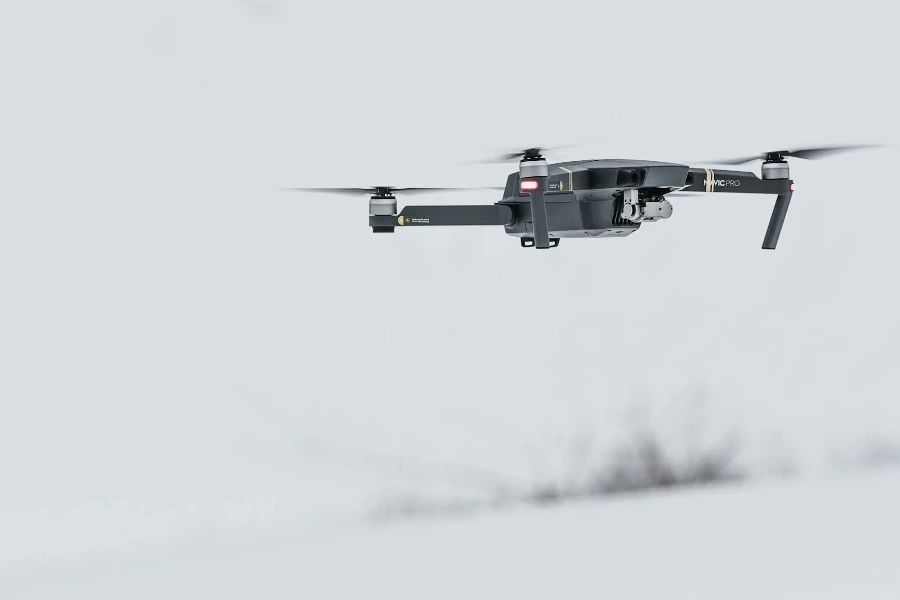
Staying updated with the latest trends in drone accessories can provide a competitive edge. The following sections highlight some of the cutting-edge advancements and trends in the industry.
Smart Controllers
Smart controllers have revolutionized drone operation. These advanced controllers come with built-in screens, high-resolution displays, and enhanced connectivity options, providing a more immersive and intuitive flying experience.
For instance, the DJI Smart Controller features a 5.5-inch 1080p screen with ultra-bright display capabilities, making it easy to view in direct sunlight. It also offers OcuSync 2.0 technology for stable and long-range transmission.
Smart controllers with customizable buttons and programmable functions allow operators to tailor the controls to their specific needs, enhancing operational efficiency and user experience.
First-Person View (FPV) Systems
First-Person View (FPV) systems are gaining popularity among professional and recreational drone pilots. FPV systems provide a real-time video feed from the drone’s camera to the pilot’s goggles or screen, offering an immersive flying experience akin to being in the cockpit.
Advanced FPV systems, such as the DJI FPV Goggles V2, offer low latency and high-resolution feeds, ensuring smooth and responsive control. These systems are particularly beneficial for racing drones and aerial cinematography, where precise maneuvering and real-time feedback are crucial.
Autonomous Flight and AI Integration
Autonomous flight capabilities and AI integration are transforming drone operations. Accessories that enable autonomous flight modes, such as waypoint navigation, follow-me, and orbit modes, enhance the drone’s functionality and ease of use.
AI-powered accessories, such as object recognition cameras and advanced obstacle avoidance systems, can significantly improve safety and operational efficiency. These technologies allow drones to recognize and avoid obstacles autonomously, reducing the risk of collisions and enabling more complex flight missions.
Modular Designs
Modular designs in drone accessories offer flexibility and ease of customization. Modular drones allow operators to swap out components such as cameras, sensors, and payloads quickly, adapting the drone for various missions.
For example, the DJI Matrice 300 RTK features a modular design that supports multiple payload configurations, including thermal cameras, LiDAR sensors, and multispectral cameras. This versatility makes it suitable for applications ranging from industrial inspections to agricultural monitoring.
Cost Considerations and Budgeting for Drone Accessories
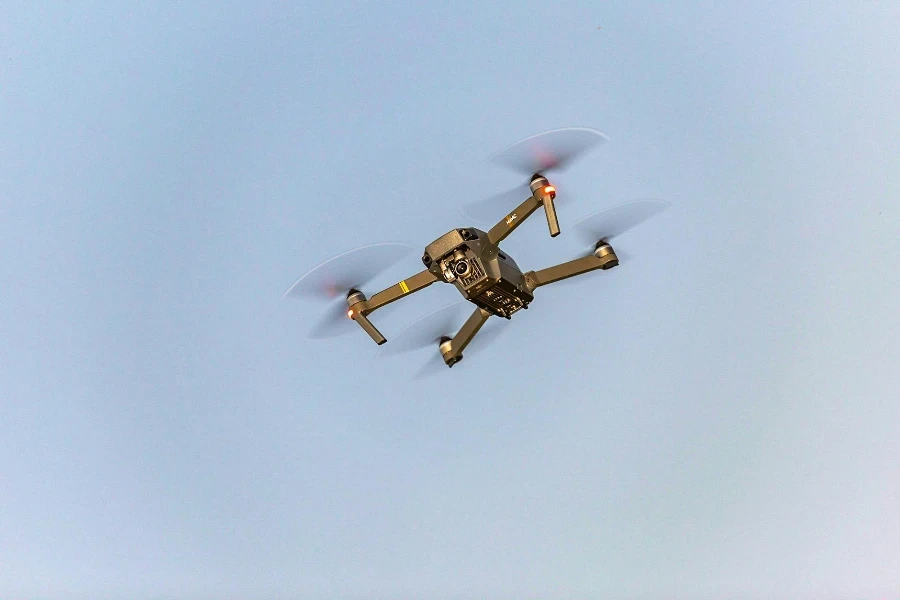
Cost considerations and budgeting are critical when investing in drone accessories. Understanding the price range and evaluating the cost-benefit ratio of each accessory can help in making informed purchasing decisions.
Price Range and Quality
Drone accessories come in a wide range of prices, from affordable options for hobbyists to high-end professional-grade equipment. While it may be tempting to opt for cheaper accessories, it is essential to consider the quality and reliability of the products.
High-quality accessories, though more expensive, often offer better performance, durability, and safety features. For instance, a high-quality LiPo battery may cost more upfront but will provide longer flight times and a longer lifespan compared to a cheaper alternative.
Evaluating Cost-Benefit Ratio
When budgeting for drone accessories, evaluate the cost-benefit ratio by considering the accessory’s impact on the drone’s performance and operational efficiency. For example, investing in advanced camera systems can significantly enhance the quality of aerial footage, justifying the higher cost for professional photographers and videographers.
Similarly, safety accessories such as parachutes and anti-collision systems may seem expensive, but they can prevent costly damages and potential legal issues, making them a worthwhile investment.
Long-Term Investment
Consider drone accessories as long-term investments. High-quality, durable accessories may have a higher initial cost but will save money in the long run by reducing the need for frequent replacements and repairs.
Additionally, investing in accessories that offer upgrade potential and compatibility with future technologies ensures that the drone remains relevant and functional as new advancements emerge. For instance, modular drones with interchangeable components can adapt to future upgrades, extending the drone’s operational lifespan.
Enhancing Drone Operations with Advanced Accessories
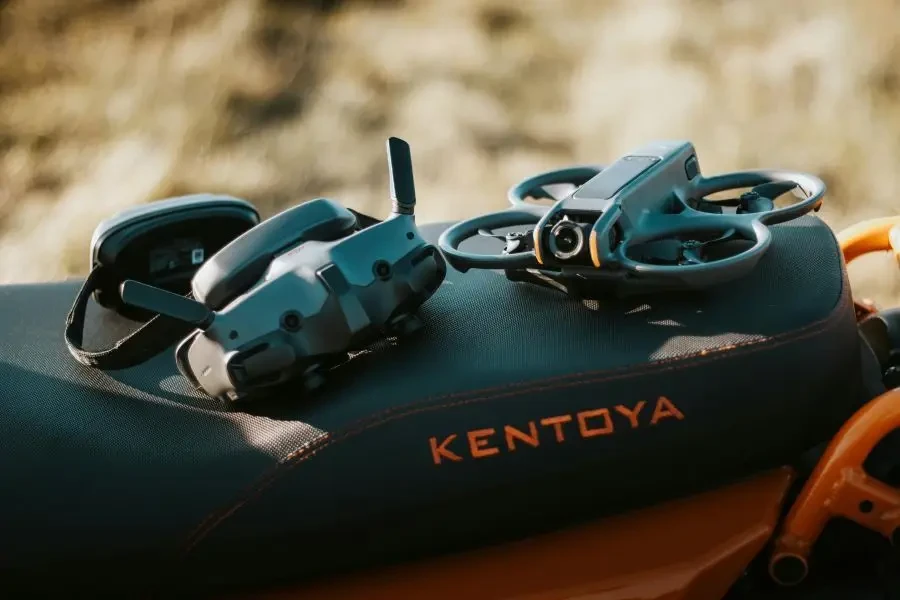
Advanced drone accessories can significantly enhance the capabilities and efficiency of drone operations. The following sections explore some of the latest advancements and their practical applications.
Thermal Imaging Cameras
Thermal imaging cameras are invaluable for various industrial applications, including inspections, search and rescue, and environmental monitoring. These cameras detect heat signatures and provide thermal images, enabling operators to identify issues that are not visible to the naked eye.
For instance, the FLIR Vue TZ20-R thermal camera offers dual thermal zoom lenses, providing detailed thermal images for precise inspections. This accessory is particularly useful for detecting heat leaks in buildings, monitoring wildlife, and conducting night-time search and rescue missions.
LiDAR Sensors
LiDAR (Light Detection and Ranging) sensors are essential for creating high-resolution 3D maps and models. These sensors use laser pulses to measure distances and generate precise topographical data, making them ideal for surveying, construction, and environmental monitoring.
The DJI Zenmuse L1, for example, integrates a LiDAR sensor with a high-accuracy IMU (Inertial Measurement Unit) and a 20MP RGB camera, providing comprehensive data for accurate 3D mapping. This accessory enhances the drone’s capability to perform detailed surveys and generate actionable insights.
Advanced Payload Systems
Advanced payload systems allow drones to carry and deploy various payloads, expanding their operational scope. These systems can include delivery mechanisms, spraying systems for agriculture, or specialized sensors for scientific research.
For instance, the DJI Agras T30 features a high-capacity payload system for agricultural spraying, enabling precise and efficient application of fertilizers and pesticides. This accessory enhances the drone’s functionality for agricultural operations, increasing productivity and reducing labor costs.
Wrapping Up
In summary, selecting the right drone accessories involves careful consideration of compatibility, build quality, performance, and safety features. Staying updated with the latest trends and advancements can provide a competitive edge, while thoughtful budgeting ensures a cost-effective investment. By enhancing drone operations with advanced accessories, businesses can unlock new possibilities and achieve greater efficiency and innovation in their applications.
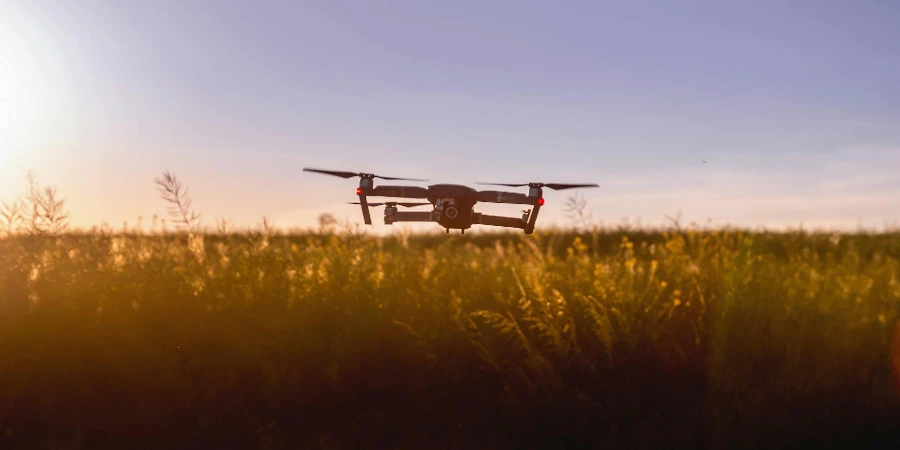




 Afrikaans
Afrikaans አማርኛ
አማርኛ العربية
العربية বাংলা
বাংলা Nederlands
Nederlands English
English Français
Français Deutsch
Deutsch हिन्दी
हिन्दी Bahasa Indonesia
Bahasa Indonesia Italiano
Italiano 日本語
日本語 한국어
한국어 Bahasa Melayu
Bahasa Melayu മലയാളം
മലയാളം پښتو
پښتو فارسی
فارسی Polski
Polski Português
Português Русский
Русский Español
Español Kiswahili
Kiswahili ไทย
ไทย Türkçe
Türkçe اردو
اردو Tiếng Việt
Tiếng Việt isiXhosa
isiXhosa Zulu
Zulu